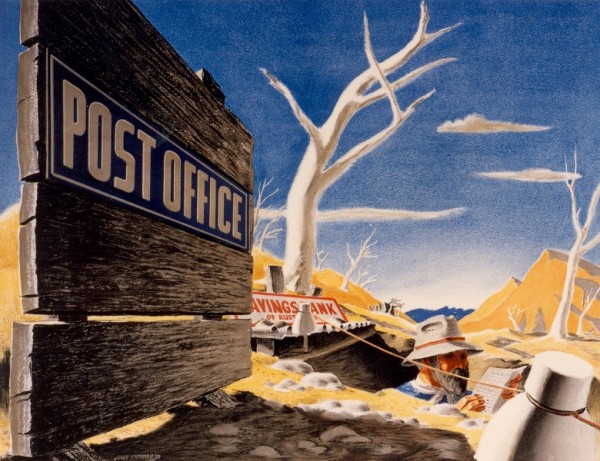
Royal Mail: Britain’s 500-year-old postal service
Since Tudor times, Britain’s postal network has been connecting families and friends, enabling business and driving innovation across the country.
Reminisce over the rich history of the British postal service with images from the British Postal Museum and Archive (all available for licensing).
History of the British post – in pictures
1516: first recorded use of postal service

The King’s Messenger, A.D. 1482, 1935 (colour litho), John Armstrong (1893-1973) / British Postal Museum and Archive
King Henry VII established a “Master of the Posts” position.
1635: public use of postal service

Trompe L’Oeil Still Life (oil on panel), Jean-Francois de la Motte (17th century) / Musee des Beaux-Arts, Arras, France
King Charles I made his postal service available to the public.
1793: postmen wear uniforms

Postmen’s Uniforms, 1894 (w/c on paper), English School (19th century) / British Postal Museum and Archive
Postmen began to wear a standardised uniform, though the iconic blue coat did not appear until the 19th century.
1830: the first mail trains

Great Western Railway, used as a parcel sorting centre (b/w photo), English Photographer (19th century) / British Postal Museum and Archive
The first mail trains began to make deliveries from Liverpool to Manchester.
1840: Penny Black stamps

Penny Black and Penny Red, 1850, English Photographer, (19th century) / Private Collection / Archives Charmet / Bridgeman Images
The first adhesive postage stamp, the Penny Black, was released nationally.
1852: first post boxes

Great Britain, England, Berkshire, Windsor, green post box, / Dorling Kindersley/UIG / Bridgeman Images
The first Post Office pillar box was erected in Jersey; a year later they were erected in mainland Britain. Unlike the iconic red pillar boxes in use now, these originals were painted green.
1880: postal workers on bicycles

Postmen with Bicycles, c.1900 (b/w photo), English School (20th century) / British Postal Museum and Archive
Postmen, and later postwomen, began using bicycles to deliver the mail.
1986: Post Office Group divides

Mount Pleasant Parcel Office, London, 1938 (b/w photo), English Photographer (20th century) / British Postal Museum and Archive
The mail service split into three divisions: letter delivery (Royal Mail), parcel delivery (Parcel Force) and post office (The Post Office). The Post Office Group was renamed ‘Cosignia’ in 2001, and ‘Royal Mail Group’ in 2002.
2007: mass Post Office closures

Eton Post Office, c.1960 (colour photo), English Photographer (20th century) / British Postal Museum and Archive
Royal Mail announced plans to close 2500 Post Office branches.
2013: Royal Mail privatised

‘Outposts of the Empire – Central Australia’ poster, 1937 (colour litho), John Vickery (fl.1937) / British Postal Museum and Archive
The decision was made to privatise Royal Mail. While the future is uncertain, the heritage is preserved through photographs, posters and drawings in the British Postal Museum and Archive.
Images and Licensing
Bridgeman is proud to represent the British Postal Museum & Archive for image licensing.
Get in touch with the Bridgeman team on uksales@bridgemanimages.com with enquires about licensing and clearing copyright.
